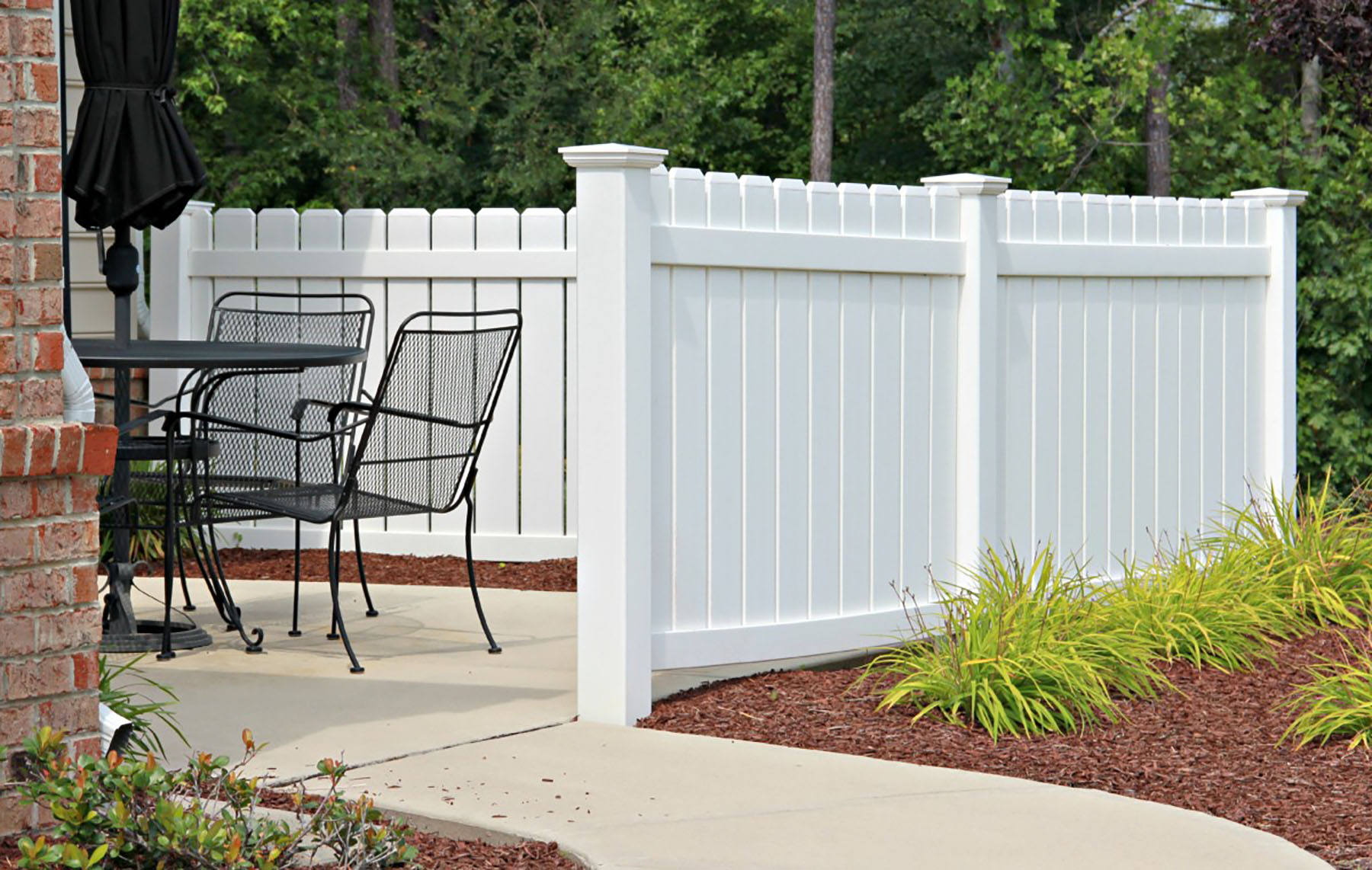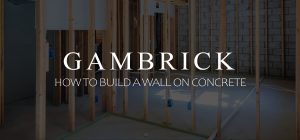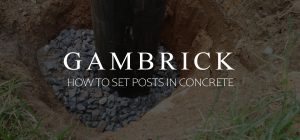Can You Move A Fence?
Fences come in a wide variety of sizes, styles and materials. Wood, vinyl, chain link and iron are a few of the most common types. And all of them can be moved. It’s not that hard to move a fence. You simply take it apart and move it section be section. Putting it back together isn’t that hard either if you saved all the parts. Panels typically come right off by removing some nails, screws or connecting brackets. Chain link fences are held together by a few bolts, clips and tension rods. Vinyl fences use brackets and wood uses nails or screws. Metal fences can be harder if they’re welded together but usually they’re not. Decorative elements like caps are easy to remove too, often held on by a singe screw. Overall, moving a fence is pretty simple, but the posts are a different story.
Many times a fence post will be set in concrete. If this is true for your fence, you’ll have a tough time removing and re-using them. In these cases you’ll have to decide if it’s worth the effort to remove and re-use the posts or if it’s better to replace them. Moving fence panels will still be fairly easy and they make up the majority of a fences cost.
Some fences have posts set in concrete to make them stronger. But this also makes them much harder to move because the concrete typically sticks to the post when it’s out of the ground. To move these posts you can either remove the concrete from the post with a sledge hammer or re-use the concrete footing. You can also try to pull the post out of the concrete with a jack or lever. This method leaves the concrete in the ground.
Should You Move A Fence?
Before you decide to move the fence, give it a good inspection.
Check the panels and posts for wear and tear. Especially where the post meets the ground or concrete. This is the most common place you’ll find rust or rot.
Check if the posts are set in concrete. You may have to dig down a bit because some fences set the concrete below grade level. If the posts are set in concrete then you’ll have to decide on the best strategy to deal with this. You have 3 options.
- Remove the fence post with the concrete attached and re-use the concrete.
- Remove the fence post with the concrete attached and remove the concrete with a sledge hammer.
- Pry the post out of the concrete. This option leave the concrete in the ground. You can remove it later if you want to.
A fence is typically easy to move. You simply take it apart and re-assemble it somewhere else. Each type of fence has a different method to do this. But concrete makes moving a fence much harder. There’s no easy way to deal with concrete footings.
I recommend testing each method above out on a test post to see which works best. A lot of it depends on who installed the fence.
- If the installer used a lot of concrete with deep, wide footings, it may be near impossible to remove the post by hand without a machine. In this case you should probably try to lift them out with a jack or lever.
- If the installer only used a single small bag of concrete then lifting the post and removing the concrete can be a smart option.
If you decide to remove the concrete, do it carefully. It’s easy to damage a fence post with a sledge hammer.
Moving A Fence
Just about every type of fence has the same basic construction and design. It’s important to under stand a little bit about how a fence is made and put together because that makes it easier to disassemble and move.
- Panels. These make up the bulk of the fence. They’re what keeps people out or animals in. Vinyl fence come in factory made panel sections while many wood fences are built a piece at a time with rails and pickets.
- Posts. This is what gives a fence it’s strength. Posts are installed into the ground, often times in concrete. This makes them string enough to hold the panels and resist pushing forces against the fence. A strong fence is able to keep animals in or out because of the posts.
- Brackets. Many fence designs use brackets. The brackets connect the panels or rails to the posts. Brackets help keep different parts of the fence together.
- Fasteners. Nails, bolts and screws are types of fasteners. It would be pretty much impossible to build a fence without fasteners.
- Decorative. Last you’ve got your decorative elements like post caps. They don’t serve a structural purpose but are still apart of the fence.
Moving a fence involves taking it apart and putting it back together somewhere else. This means disassembling it by removing the fasteners, brackets,panels, decorative elements and posts. Take a fence apart in the reverse order of how you install it.
For example, when you build a fence, the first thing you install are the posts. However, when you move a fence, the last thing you touch are the posts.
Moving Fence Posts
If you plan on moving a fence then you’ll inevitably have to deal with the posts. If they’re set in the dirt then it’s easy.
Once all the fence panels are removed simply dig down and pull out the posts one at a time. I generally dig on two opposite sides of the post and push back and forth until the post is free. Then I pull it out. There’s usually no need to dig on all sides of the post.
If the post is set in concrete you’ll have a much harder time freeing it. In these cases you’ll have to decide if it’s worth the effort or better just to replace them.
The best way to remove a fence post from concrete is with a jack. Tie a chain around the post tightly and position the jack beneath the chain. Make sure to put the jack on a black of wood or concrete. Try to jack the post straight up. In some cases the post ill lift out of the concrete.
If you can’t get the post out of the concrete, you’ll have to dig it out with the concrete attached. There’s no easy way to do it unless you have a machine. Just keep digging and pushing back and forth until it’s free. Be careful when lift the post out of the ground because it’ll be heavy with that concrete attached to it.
Break the concrete off the post with a sledge hammer. be careful because it’s easy to damage a fence post.
Wood Fences
Wood fences come in a wide variety of designs. The most common are the post and rail, picket, panel and lattice. The type of wood fence you have will dictate the best way to dismantle and move it.
In general, wood fences of every type are among the easiest to move. Start by figuring out which type you have and how it’s secured to the posts. Remove the fasteners, brackets, pickets, rails and panels before touching the posts.
Examine the post base where it touches the ground or concrete. This is a very common area to find rot. In this case it’s best to replace the damaged post rather than trying to move it.
Once the entire fence is down, including the posts, examine the wood to determine if it can be re-assembled. Some of the wood may be in good enough condition to re-use while some may not. Wood doesn’t always age the same depending on the amount of sun and weather it sees.
Other factors may be where fasteners were used. If the screws and nails backed out cleanly and didn’t damage the post then you may be able to re-use them. But if you find damage it could be better to replace the piece.
If the posts are set in concrete, try removing a test post first. If they’re in thick concrete figure out if it’s worth the effort to remove the posts or better to simply replace them.
Tools You’ll Need To Move A Wood Fence
Moving a wood fence typically requires a hammer, nail puller, screw gun with several bits, mallet, adjustable wrench if your brackets use bolts and a shovel. Removing the concrete from your posts will need other tools which we’ll discuss later.
Chain Link Fences
If your chain link fence has fabric, remove that first. It’s the easiest part of the fence to move.
Moving a chain link fence is different than other fences because they typically don’t come in panels. Chain link comes in rolls that can span 100 feet or more. They’re stretched tight and connected to en or corner posts.
Once the fabric is off, start removing the bolts, wires, and rods that hold the chain link to the poles. I like to roll the chain link as I go to make moving it easier. If you don’t like rolling the chain link as you go, lay it out on the ground and roll it later. Chain link is connected to the rods with twist ties so you’ll need a good set of pliers.
Twist ties are easy to remove, simply twist them in the opposite direction they were applied which unwinds them. generally the twist ties can be re-used.
After you’ve removed the fencing, work on removing the top rails and any remaining caps or brackets still attached.
Now for the posts. To get the posts out of the earth, dig around to expose the top and side of the concrete. Push and pull the steel posts to loosen the hold of the earth on the concrete and the concrete on the posts. You’d be surprised how many posts come right out of the concrete with just a hard wiggle. If they’re stuck, lift them out with a jack or lever. Or remove the posts with the concrete attached.
Tools You’ll Need To Move A Chain Link Fence
Moving a chain link fence typically requires a hammer, screw gun with several bits, mallet, adjustable wrench to loosen the bolts, a pliers and a shovel. Removing the concrete from your posts will need other tools which we’ll discuss later.
Vinyl Fences
Moving a vinyl fence is easy to do. The fence is made from panels that are secured to the posts with brackets. The brackets are screwed into the posts. All you have to do is unscrew the brackets and remove the panels.
Vinyl fences are one of the only types that use glue to secure some of the pieces together. Because of this they can be hard to dismantle. The glue is usually easy to loosen with a knife and thin pry bar or putty knife. Cut the glue at the seam and work the pry bar into the gap. Apply pressure until the bond breaks. Be careful not to crack the vinyl.
Remove the post caps first. This can be accomplished with a knife, pry bar or putty knife. Carefully break the glue and take off the cap.
Try your best to remove the panels in whole sections. Some vinyl fences glue parts together and in most cases they don’t have to be disassembled. Focus on removing the side brackets a section at a time. This makes moving the fence and reassembling it easier.
Remove the bracket screws carefully. A stripped screw will make the job harder.
Most vinyl fence posts are two parts, a 4×4 or 6×6 wood post with a vinyl sleeve around it. Remove the sleeve first and then deal with the wood post underneath.
Tools You’ll Need To Move A Vinyl Fence
Moving a vinyl fence typically requires a knife, mallet, thin pry bar or putty knife, screw gun with several bits, adjustable wrench to loosen bolts, and a shovel. Removing the concrete from your posts will need other tools which we’ll discuss later.
Iron Fences
Iron fences, particularly wrought iron fences, are among the hardest to move. They’re generally custom built on site and hard to re-use somewhere else unless you can weld.
The posts are almost always set in concrete because they tend to be very thin and need support.
It’s very common to see an iron fence built along with stone or brick pillars which act as a post. Typically we build these masonry pillars at the ends and corners of the fence run and in the middle of long spans. Pillars sit atop large concrete footings that carry the load of all that heavy masonry. Because of the weight, there’s almost no way to move them without machinery. And even after you get them out of the ground, transporting and re-installing them won’t be easy. For this reason the pillars are generally demolished.
If the fence is attached to a wall or column you’ll have to break the connection point. In some cases the iron is bolted to the masonry. In others, it’s built right into the wall or pillar. Once you determine how the iron is connected you can detach it. Once the iron is detached from all the masonry you can start on the inside posts.
If the entire fence is welded together as one piece, you’ll have to cut it down into sections and then weld it together later. Cut sections at the post because this is generally where the welds are.
After the fence is cut into sections you can work on removing the posts. Just as with other fence materials, either remove the entire post and concrete or try to remove just the post.
Tools You’ll Need To Move An Iron Fence
Moving an iron fence typically requires a hammer, screw gun with several bits, adjustable wrench to loosen bolts, a metal cutting saw, welding equipment and a shovel. Removing the concrete from your posts will need other tools we’ll discuss later.
Barbed Wire
Fences made with barbed wire are dangerous and difficult to dismantle. Take your time with these because the barbed wire can really hurt you.
Make sure when working with barbed wire to wear safety equipment. I always wear very thick gloves that come up to my elbows and goggles.
Barbed wire is generally attached to wood posts with staples. Remove the staples from the posts first. When your ready to cut the wire, keep a safe distance because barbed wire has a tendency to move when cut.
Some barbed wire fences are attached to metal posts with twist ties. In this case, remove the ties one at a time with a pair of pliers.
Carefully roll or coil your barbed wire up as you remove it. This makes it easier to transport.
Once the barbed wire is rolled you can get to work on the posts.
Tools You’ll Need To Move A Barbed Wire Fence
Moving a barbed wire fence typically requires a pliers to remove staples or twist ties, a wire cutter, safety equipment and a shovel.
Removing the concrete from your posts will need other tools we’ll discuss later.
Summary: Can You Move A Fence?
Fences come in a variety of sizes, styles and materials. Wood, vinyl, chain link and iron are a few common types. All of which can be moved. It’s not that hard to move a fence. You simply take it apart and move it section be section. Putting it back together is easy if you saved all the parts. Panels typically come off by removing some nails, screws or connecting brackets. Chain link fences are held together by a few bolts, clips and tension rods. Vinyl fences use brackets and wood uses nails or screws. Metal fences can be harder if they’re welded together but usually they’re not. Decorative elements like caps are easy to remove too, often held on by a singe screw. Overall, moving a fence is pretty simple, but the posts are a different story.
Many times a fence post will be set in concrete. If this is the case, you’ll have a tough time removing and re-using them. You’ll have to decide if it’s worth the effort to remove and re-use the posts or if it’s better to replace them. Moving fence panels will still be fairly easy and they make up the majority of a fences cost.
Some fences have posts set in concrete to make them stronger. But this also makes them much harder to move because the concrete typically sticks to the post when it’s out of the ground. To move these posts you can either remove the concrete from the post with a sledge hammer or re-use the concrete footing. You can also try to pull the post out of the concrete with a jack or lever. This method leaves the concrete in the ground.
If you have any questions or comments about moving a fence Email any time.
























